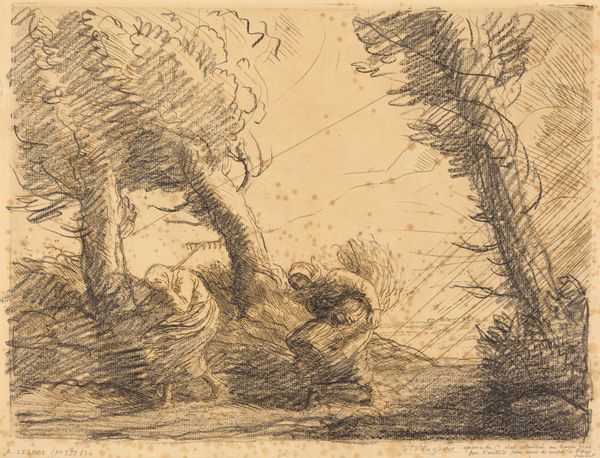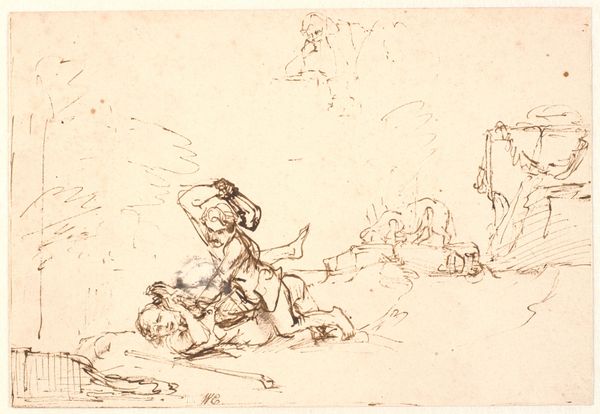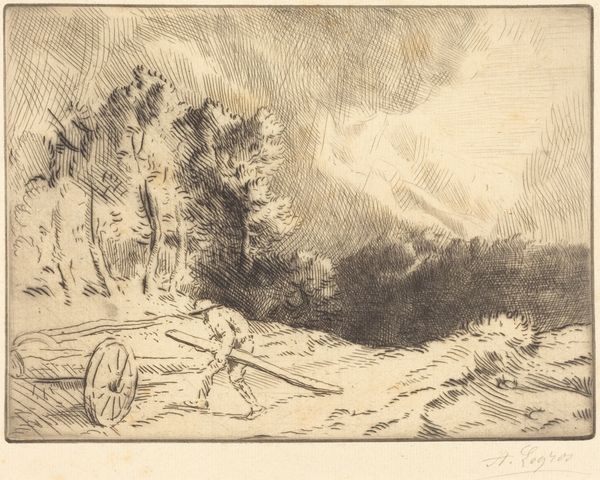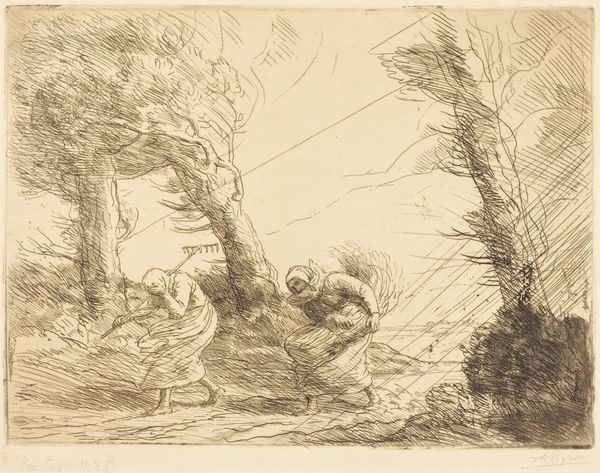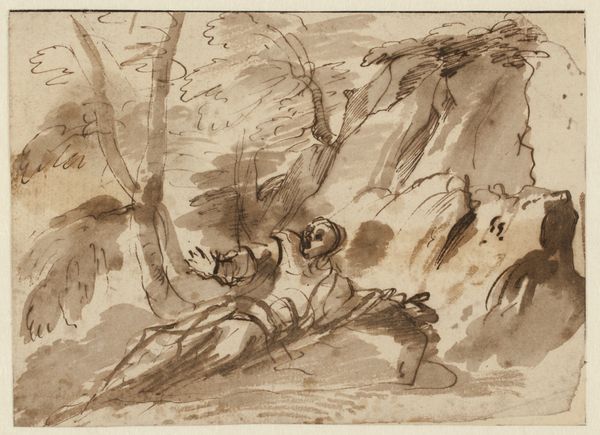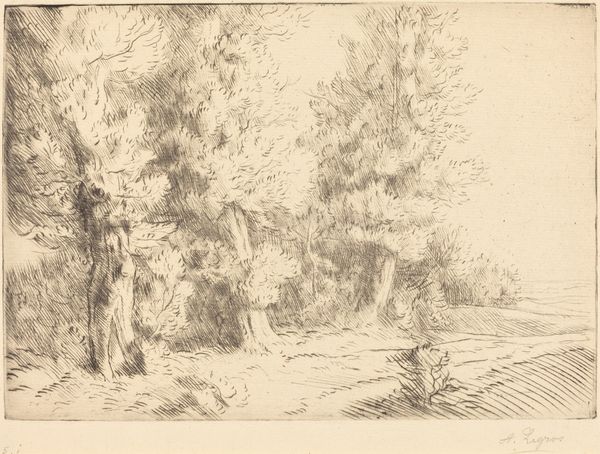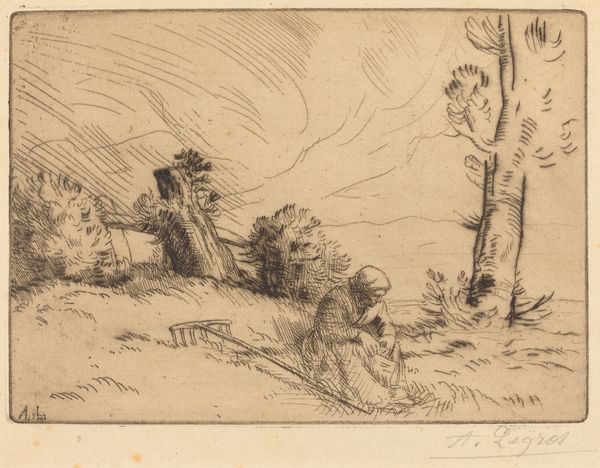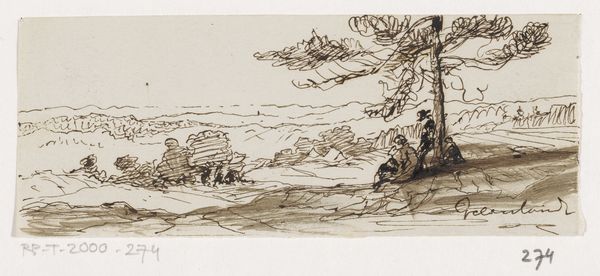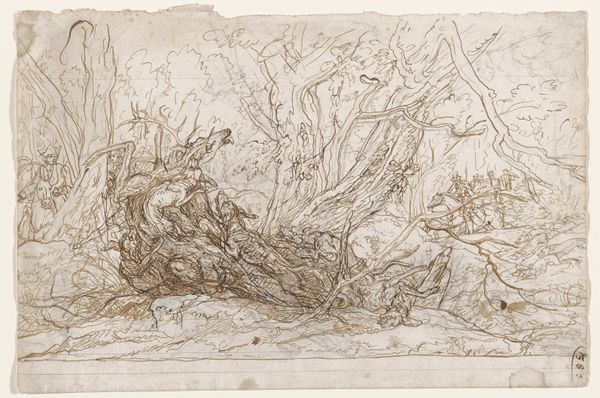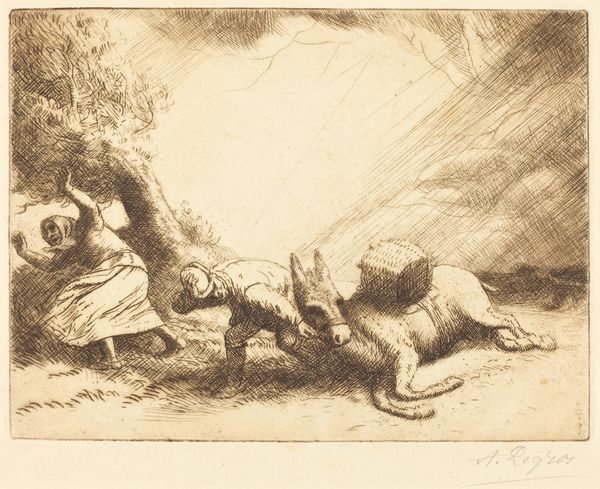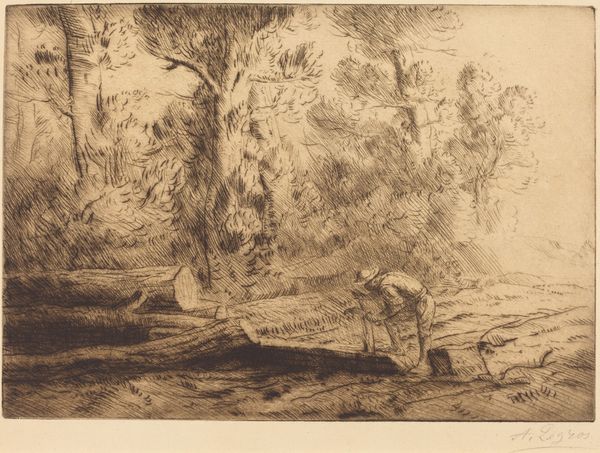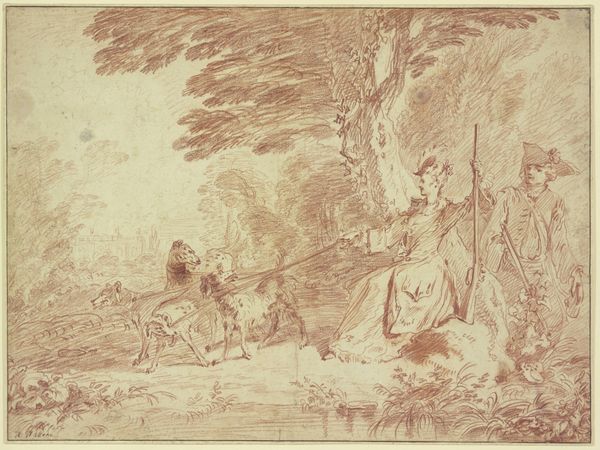
drawing, paper, ink, pen
#
drawing
#
narrative-art
#
baroque
#
landscape
#
figuration
#
paper
#
ink
#
chiaroscuro
#
pen
#
history-painting
Dimensions: 194 × 244 mm
Copyright: Public Domain
Curator: How do we approach Rembrandt's "The Good Samaritan" from 1650, currently at the Art Institute of Chicago? Editor: It's a pen and ink drawing, on paper, depicting the biblical scene. The brown ink creates a stark contrast, and the rapid, almost frantic linework conveys a sense of urgency. What is the material significance here? Curator: The materiality speaks volumes. Ink, paper, a readily accessible medium, suggest a study, a working through of ideas rather than a finished, pristine object of high art. Rembrandt democratizes the sacred. The pen and ink allow for layering and correction. Editor: So, you're suggesting that the chosen medium brings this piece and it’s holy message down to earth, into the realm of everyday creation? Curator: Precisely. Consider the paper, too. It's not parchment, it is inexpensive, and intended as a support for fleeting thoughts. In tandem with the ink medium, it indicates that this narrative of kindness and sacrifice may be more important as a readily reproducible subject for social commentary, as opposed to the inherent aesthetic value of the work itself. The production is accessible and transportable! Why else might he choose ink over oils? Editor: Maybe to comment on the social landscape around him and connect the message with his viewers’ everyday struggles. Thank you! Curator: Exactly. Looking at the materials emphasizes the dissemination of meaning through accessible production. It's art *for* the people in its *making*, rather than simply *of* the people in subject. Something for both of us to consider.
Comments
No comments
Be the first to comment and join the conversation on the ultimate creative platform.

